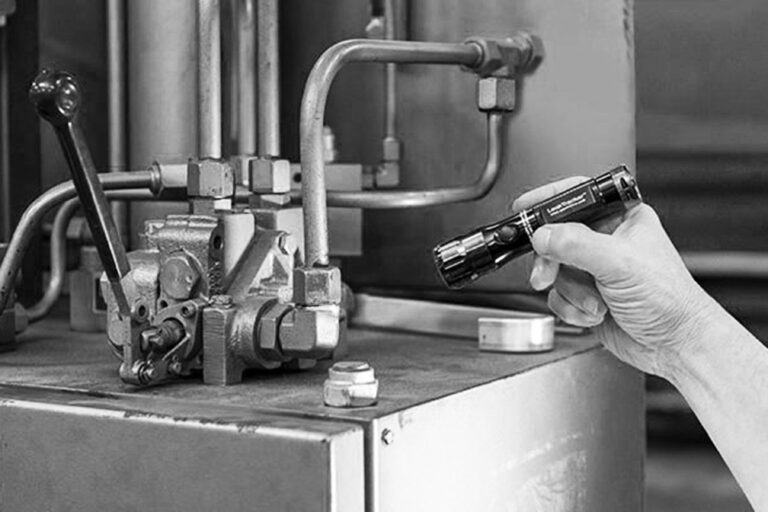8 points to remember, When Hydraulic Fitting Leaks

We have seen and heard many cases about leakages in hydraulic tube fittings, from small enterprise to large corporates. Below 8 points about what not to do when you find a hydraulic fitting leaks and why.
- Don’t use your hand to check for leaks.
Sometimes, Hydraulic fluid reaches temperatures of 148 ºC or higher, which can quickly burn your hands. In addition, leakages thru a pinhole with high velocity fluid to your hand can also results in severe injury.
- Don’t just torque (tighten).
Fluid leaks are sometimes due to loose nut. This problem can be easily corrected by tightening the nut. However, we often see people over-tightening. This ruins hydraulic fitting integrity and is one of the most common causes of Hydraulic tube fitting leaks. Be sure to assess the fitting connection before unconsciously tightening.
- Don’t leave the system pressurized.
Always depressurize a hydraulic system before inspection. This applies even if you only see a slow fluid drip on the ground. Depressurization minimizes the chances of hydraulic fluid venting from a machine component during inspection.
Note: be aware that trapped fluid under pressure and back pressure can still be present after the system is turned off.
- Don’t replace with a different fitting type to save time/money.
Make sure you replace a fitting with the same fitting type even if it takes longer to procure. Grabbing a similar Hydraulic fitting and trying to make it work simply because it’s readily available. The downtime you experience while waiting for the correct part is worth the time and money you save in long term. If you are not sure, how to identify the fitting to be replaced, contact hyloc.
- Don’t always blame the fitting.
The drip point may not be the leak point. Drips happen at the lowest point of gravity. While fluid may be dripping off a fitting, the actual leak point could be elsewhere in the system.
- Don’t reuse an O-ring.
O-rings should always be changed even if you are reassembling a reusable fitting. O-rings are susceptible to cracks that can ruin seal integrity upon reassembly.
- Don’t forget to clean the connecting ends before replacing or reassembling a fitting.
Thoroughly clean ends of fittings, especially threads. This helps prevent dirt, metal flakes or any foreign particles from entering into the hydraulic system. These particles have been known to completely ruin expensive hydraulic machinery.
- No open flames.
Keep all open flames away from leak points, if any. People often forget that pinhole leaks can create mist-like “clouds” of flammable vapour. Common hazards include lit cigarettes, the use of lighters for illumination and welding or cutting torches being used close by.
Even a minor leak could be a sign of a more serious problem in your hydraulic system, and can cause performance issues and inefficiencies. Resolve the issue as soon as possible and don’t ignore it.
